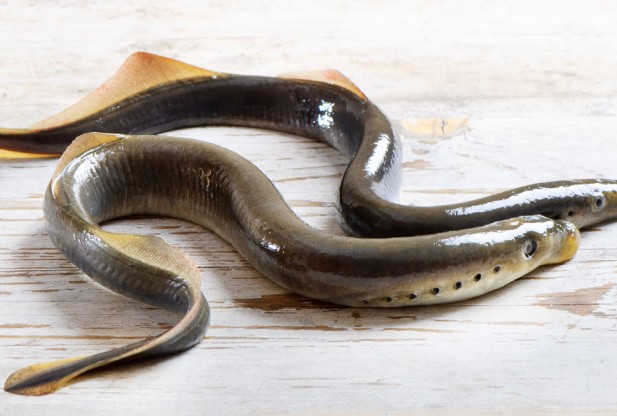Adult sea lamprey populations reach suppression targets for first time since program initiated
SAULT STE. MARIE—The Department of Fisheries and Oceans Canada (DFO)-Sea Lamprey Control Centre are reporting that due to the long standing sea lamprey management program on the Great Lakes, the population of adult sea lamprey has now reached suppression targets for the first time in the history of the program.
“We’ve now reached defined targets for the suppression of adult sea lamprey for the first time in 30 years, the first time in the history of the program,” stated Paul Sullivan, of the DFO last week, “and marking targets for lake trout have gone down very significantly. The target set is five marks of lake trout having been targeted by lamprey.”
Mr. Sullivan explained, “The program has provided benefits. We have seen an excellent sign over the years in the increase in natural reproduction of lake trout and their reaching maturity. There has been great success in Lake Huron. This is due to this program and putting in place better control of sea lamprey larval populations in the St. Mary’s River, one of the largest producers (of sea lamprey populations).”
Mr. Sullivan outlined these findings as Fisheries and Oceans Canada has announced its 2017 Sea Lamprey Management Program for 2017 on the Great Lakes. Fisheries and Oceans Canada, acting as the Canadian agent for the Great Lakes Fishery Commission, has the responsibility for sea lamprey assessment and control in the Canadian waters of the Great Lakes basin, as well as in the New York waters of Lake Ontario.
Application of selective lampricides to streams and lentic areas harbouring larval sea lampreys continues to be the primary method of control. In streams and rivers, licenced crews apply TFM (3-trifluoromethyl-4-nitrophenol) alone or in combination with Bayluscide (2’, 5-dichloro-4’-nitrosalicylanilide), while in estuaries, lakes and interconnecting channels (collectively referred to as “lentic areas”), a bottom-release granular formulation of Bayluscide is applied. Treatments are normally conducted every three to five years and are very effective in reducing the number of larval sea lampreys before they migrate to the lake and kill fish important to the Great Lakes recreational, commercial, and aboriginal fisheries.
Portions of the following tributaries and lentic areas to Lakes Superior, Huron, Erie and Ontario are scheduled for lampricide treatment in 2017 for Lake Superior, Lake Huron, Lake Erie, Lake Ontario—both on Canada and US sides.
For Lake Huron, Manitoulin Island tributaries included for the treatment this year include Silver Creek and Mindemoya River. Treatments will be conducted during the period of April to November 2017.
Provincial and state agencies are notified of treatment dates, as are municipalities and individuals that may use these streams as a source of potable water. Agriculture irrigators will also be notified and asked to suspend irrigation for a 24-hour period surrounding the treatment .
“Yes, we have better control of the larval population of sea lamprey in places like St. Mary’s River,” said Mr. Sullivan. “As a result of the success of this program, the sea lamprey population, which was at six million in 1999, now sits at one million. This program has been an effective approach to control the lamprey.”
Lampricides are lethal to lampreys but impart little harm to other fish species at concentrations used in treatments. Individual fish may be affected if weakened through spawning activities, environmental stress, disease, injury or pollution. As well, some aquatic species or life stages may exhibit sensitivity, including members of the catfish family and mudpuppies.
Bait fish or other aquatic organisms that are confined artificially may be susceptible to the lampricide due to stress caused by crowding and handling.
Barriers designed and constructed to prevent migrating adult sea lampreys from accessing spawning areas also play an important role in controlling sea lampreys and reduce the need for application of lampricides. Thirty-one barriers have been constructed in Canadian tributaries to the Great Lakes, many of which incorporate traps to capture and assess populations of adult sea lampreys during their spring spawning migration. Some barriers are designed with adjustable crests to facilitate fish passage while others are constructed with fish passage capabilities.
Great Lakes tributaries are systematically surveyed to detect and evaluate larval sea lamprey population. Stream surveys using portable electrofishing gear or applications of Bayluscide will be conducted on approximately 88 Lake Superior, 67 Lake Huron, 25 Lake Erie and 70 Lake Ontario tributaries and/or their associated bays in 2017 to identify and evaluate new or re-established populations of sea lamprey.




